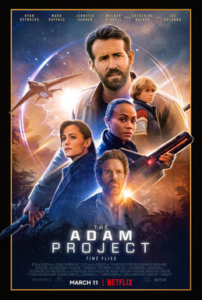Non-Fungible Tokens have recently been the talk, and the internet is going wild about it. The rise of NFTs is a signal for revolution in the creative industry. However, people are still hovering over it to understand and are unclear whether it suits them and what it is all about. Let’s look at all the details of NFTs for a detailed understanding. Explore the concept of ownership in the digital realm.

What is NFT?
An NFT, short for “Non-fungible token”, represents a digital asset. NFTs trade using blockchain technology and stand in for physical goods like GIFs, avatars, real estate, memes, and video game skins similar to cryptocurrencies. People use NFT marketplaces to buy and trade these assets. Each NFT is unique and cannot be replaced because it has its unique identifier and metadata. For investors and collectors looking to purchase, sell, and trade both real and digital art, NFTs have grown to be a sizable market. Some of the biggest sales in the NFT industry have resulted from the popularity of NFT projects and the success of digital artists.

Explain NFT Art
NFT art is a digitalized form of art tokenized by the artist onto a blockchain. These digital artworks can be sold and bought by investors and collectors and are unavailable physically. Also, NFT arts established ownership and cannot be transferred, which makes the circulation of digital art files scarce. However, any number of people can buy copies of an NFT artwork, but the original ownership belongs to one owner.

How to Create an NFT?
The designers must build a “Crypto Wallet” to set up an NFT to sell. Next, one must link a cryptocurrency wallet to one of the NFT exchanges. Designers and artists can upload their digital artwork to NFT marketplaces and list it for sale as an NFT. A few NFT marketplaces, Rarible, OpenSea, Mintable, KnownOrigin, and SuperRare, are exclusively for NFT artworks. The artworks can be listed as single original copies or made as many copies of the original work while selling on the above platforms. Similar to conventional art forms, the quantity of the original edition and the rarity of a work will directly affect its worth.
What Difference Do NFTs Make to Creators?
- Before NFTs, digital work was copied, reposted, and used for graphics without bothering the creator. NFTs have enabled ownership and credibility for the work of the creators. The creator can create legal ownership of their work before listing them on the online platforms.
- Creators can make money with their digital creations by selling them on the NFT platforms. NFT platforms are solely created for the selling and buying of digital artworks. They can also earn by establishing royalties for their work.
- However, NFTs are sold based on Ethereum, which means monetary value. If Ethereum falls, the value of the NFT art also falls as the value is dependent on the cryptocurrency.
- The surge in NFT trading has shifted art collecting to the digital realm, allowing artists worldwide to sell their work to a broader audience.
- The art sector of NFTs professes to create an inclusive, protective environment for digital artists to make money.
What is Blockchain?
Within a computer network, nodes work together to uphold a distributed database or ledger called a blockchain. This blockchain is a digital data storage system renowned for its integral role in cryptocurrency systems like Bitcoin. What sets blockchain apart is its ability to establish trust without reliance on a central authority, guaranteeing the precision and security of data records.
How Does Blockchain Technology Work?
Blockchain seeks to distribute and record digital information without ever editing it. A blockchain serves as the basis for records of transactions because they are unchangeable and cannot be added to, subtracted from, or destroyed. Hence, blockchains are also called as distributed ledger technologies (DLT).
What is Ethereum?
Ethereum is blockchain-based and is a decentralized global software platform. Most people know it because of its native ether (ETH) cryptocurrency. Anyone may use Ethereum to develop any secure digital technology. It has a token created to pay for work maintaining the blockchain, but participants can also use it, if accepted, to pay for material products and services.
Where to Buy an NFT?
Here we mention a few of the websites that offer to sell NFT. The other emerging marketplaces, such as Magic Eden market and Solana blockchain, are more environment-friendly. Some NFT marketplaces have niches like Seed. Photo, which is a great NFT photography platform. Below are a few NFT marketplaces to get familiar with.
- OpenSea
- Magic Eden
- SuperRare
- Nifty Gateway
- Foundation
- Seed photo
- BakerySwap
- Axie Marketplace
- Rarible
- NFT ShowRoom
People Who Use NFTs
NFTs are currently popular among businesses, gamers, and artists. New competitors enter the NFT market every day. Entering the NFT market gives artists another avenue for selling their work and gives fans a means to support it. Celebrities also participate by making their NFTs or investing as collectors (or having them created for them by artists). These celebrities are employing some of their new NFTs in media-related ventures.
Are NFTs for Everyone?
NFTs are also altering the way that games are created and played. Players can purchase characters or cards in NFT games like Axie Infinity or Gods Unchained. The more distinct and interesting they are, the more valuable they become. Some of the best NFT games are:
Drawbacks of NFT Art
- NFTs often rely on blockchain networks with high energy consumption, contributing to environmental issues like carbon emissions.
- Proving ownership and copyright infringement can be complex, leading to legal disputes within the NFT art space.
- The NFT art market can be volatile and speculative, making it risky for artists and investors.
- Some argue that NFTs contradict the idea of art accessibility, as ownership is limited to those who can afford digital tokens.
- NFT art lacks physical presence, which may be unsatisfactory for collectors who value tangible artworks.
- Due to the relative novelty of NFTs, scams and fraudulent activities are prevalent, putting buyers and artists at risk.
- Not all artists benefit equally from NFTs; established artists often profit more than emerging talents.
- NFT art relies on online platforms, which can be vulnerable to technical issues, hacking, or shutdowns.
- The current hype around NFTs may not be sustainable in the long term, potentially leading to market crashes.
- NFTs are less regulated than traditional art markets, leaving room for unethical practices.
Videos
NFT Explained In 5 Minutes | What Is NFT? – Non Fungible Token | NFT Crypto Explained | Simplilearn
How to Make and Sell an NFT (Crypto Art Tutorial)
How NFTs Are Invading the Art World
How To Make Your Art Into An NFT | 2022
How to Make NFT Digital Art for Beginners (2022)















